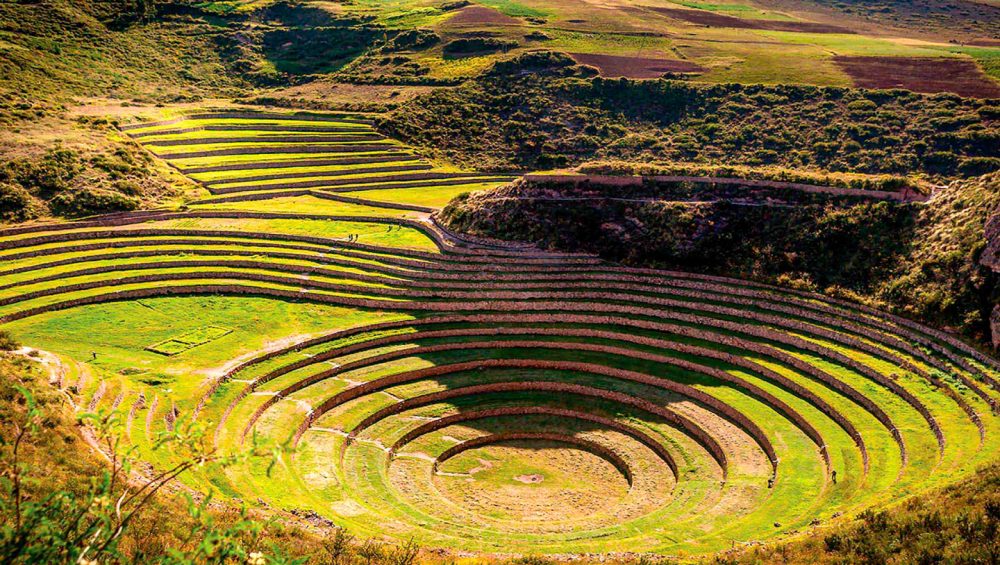Your complete guide to Peru’s Sacred Valley, including its history, climate, top activities, travel tips, and must-visit towns.
If you’re planning to visit Peru and are captivated by Incan history, the Sacred Valley is likely at the top of your list of must-see destinations in Cusco. And it should be! Filled with history and natural beauty, the Sacred Valley is an unmissable and unforgettable experience. Read on to discover why.
About the Sacred Valley in Cusco
Just 15 kilometers north of Cusco lies the Sacred Valley. With towns like Pisac and Ollantaytambo, the Sacred Valley—also known as the Sacred Valley of the Incas—is one of South America’s most significant historical sites. It was vital to the Incas and is located along the Urubamba River valley.
The Sacred Valley specifically refers to the section divided by the Urubamba River, encompassing towns such as Pisac, Calca, Yucay, Urubamba, and Ollantaytambo. While Machu Picchu is the most famous site, the ruins in Pisac and Ollantaytambo showcase the Incas’ remarkable stonework and architectural skills. These towns served as border outposts to protect the Sacred Valley from enemy attacks.
The valley thrived due to its fertile lands, becoming the center of agricultural production for the Incan civilization. Today, you can marvel at the agricultural ingenuity at Moray, where the Incas created terraces to experiment with optimal growing conditions for crops. They cultivated everything from maize and fruits to cacao plants and avocados.
The Sacred Valley was not only a hub for agriculture but also a reflection of Incan cosmology, symbolizing the constellations. This highlights the Incas’ reverence for the heavens and the religious significance of their beliefs. The valley is dotted with ceremonial temples, palaces, and fortresses set amidst breathtaking landscapes.
History of the Sacred Valley
In the 15th century, Incan leaders Pachacuti Yupanqui and Túpac Yupanqui built a massive empire stretching from central Chile to southern Colombia, covering modern-day Peru, most of Ecuador, and parts of Argentina and Bolivia. This vast empire, known as the Tahuantinsuyo, spanned 4,000 kilometers from north to south and was connected by an impressive 40,000-kilometer road network. At the heart of it all? Cusco.
Cusco was part of the Sacred Valley and boasted extraordinary agricultural and financial wealth. Protected by Incan fortresses, the valley extended to the Vilcanota and Urubamba rivers, with the Vilcanota River holding special sacred significance as a representation of the Milky Way.
Climate in the Sacred Valley
Situated at 2,800 meters above sea level, the Sacred Valley enjoys one of the most pleasant climates in the Andean region. This favorable climate supported agricultural research and experimentation, attracting Incan nobility to settle here. Daytime temperatures range from 19°C to 24°C, and its slightly lower altitude than Cusco makes it an ideal spot for travelers to acclimate before heading to Machu Picchu.
Rainy Season (December–March)
- Temperature: 15°C (low) to 27°C (high)
- Conditions: Predominantly rainy with occasional bursts of sunshine
- Humidity: Around 65%
Dry Season (April–November)
- Temperature: 10°C (low) to 22°C (high)
- Conditions: Mostly sunny with some cloud cover
- Humidity: About 46%, offering comfortable weather
Altitudes of Sacred Valley Towns
- Pisac: 2,980 meters above sea level
- Calca: 2,929 meters above sea level
- Urubamba: 2,870 meters above sea level
- Ollantaytambo: 2,850 meters above sea level
Towns of the Sacred Valley
- Pisac
Just 33 kilometers from Cusco, Pisac is a charming village rich in history and traditional values. Built on an ancient Incan settlement, the town was founded by Spanish conquistador Viceroy Toledo. Highlights include the Quechua mass and the Pisac Archaeological Park, featuring a military fortress, observatories, and polished stone constructions. Don’t miss visiting South America’s largest Incan cemetery here. - Calca
Known for its tranquility and natural beauty, Calca offers visitors the chance to unwind amidst breathtaking landscapes. Visit the natural sulfuric waters of Machacancha and the carbonated cold springs of Minasmoqo. - Yucay
Although often excluded from traditional Sacred Valley tours, Yucay is worth a visit for its historical significance as the agricultural hub of the Incan empire. It is home to the Inca Manco Sayri Túpac II palace. - Urubamba
Set in the fertile valley, Urubamba continues its legacy of agricultural productivity and is celebrated for its abundant fruit. Known as “The Pearl of Vilcanota,” the town features stunning surrounding landscapes and thriving indigenous communities. - Ollantaytambo
A must-visit destination in the Sacred Valley, Ollantaytambo is renowned for its well-preserved Incan and pre-Incan ruins. Known as the “living Inca city,” many of its buildings date back to the Inca era. Climb the mountainside to explore the awe-inspiring fortress, a sight you won’t forget.
Things to Do in the Sacred Valley
- Whitewater Rafting
Adventure enthusiasts shouldn’t miss whitewater rafting in Ollantaytambo. Enjoy thrilling rapids while soaking in views of ancient Incan ruins. - Mountain Biking
Experience unforgettable trails and dirt roads starting from Qenqo, Pucapucara, or Tambomachay. The scenic views make this a must-try activity in the region. - Pisac Market and Incan Ruins
Pisac is world-famous for its vibrant artisan market and remarkable archaeological remains. Explore the historic site and shop for unique crafts, making it a perfect blend of culture and commerce.

